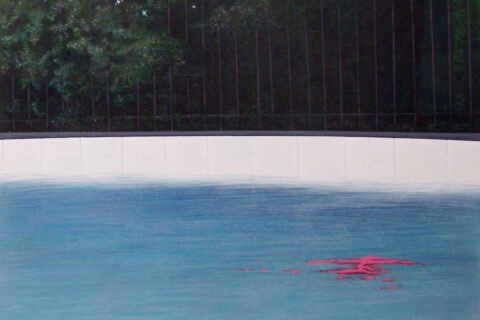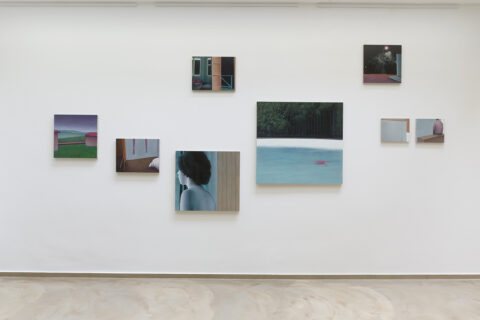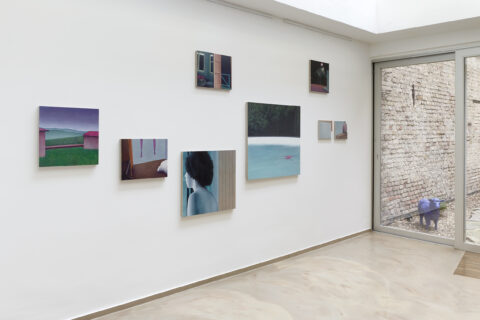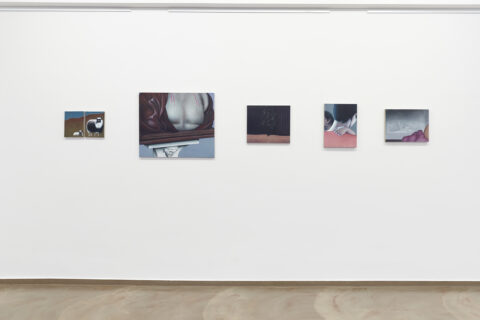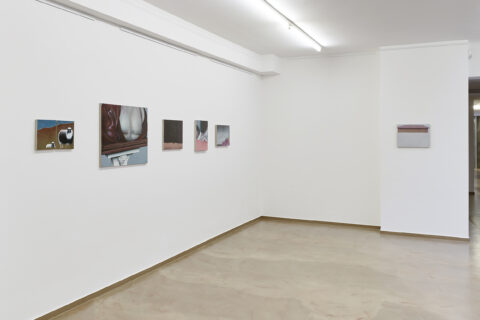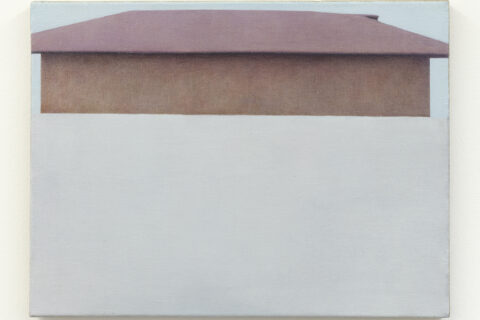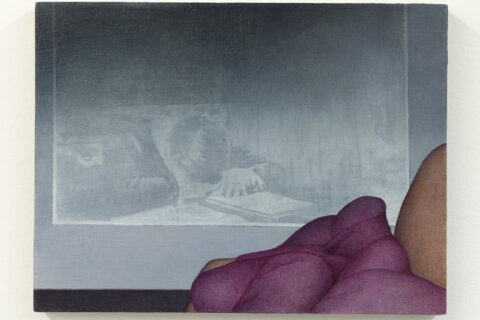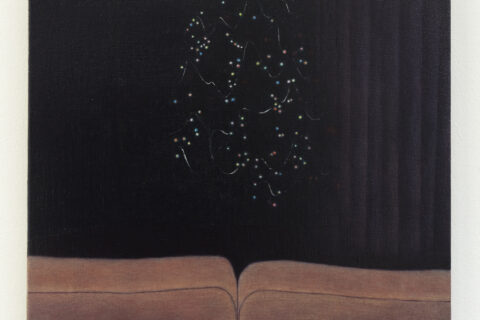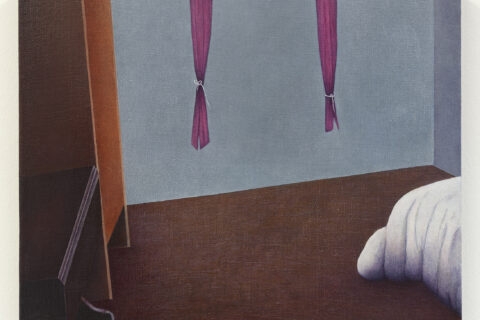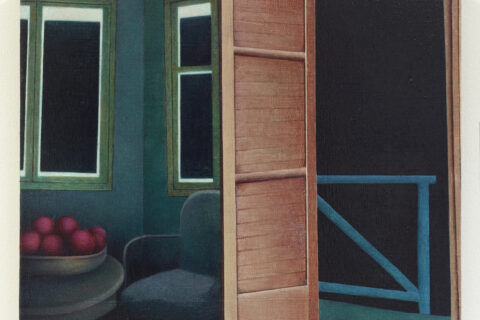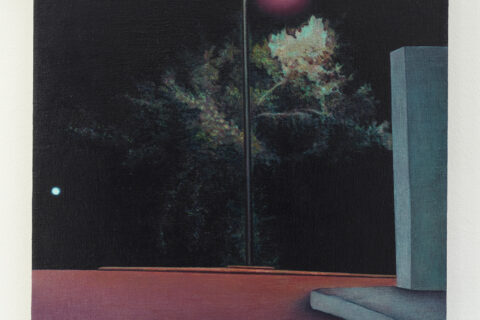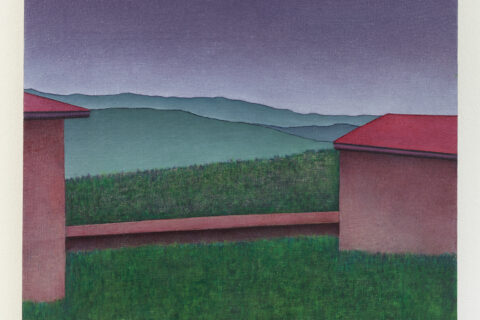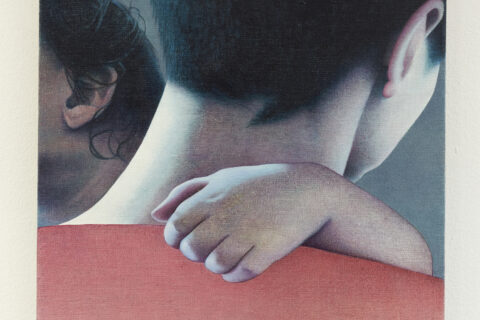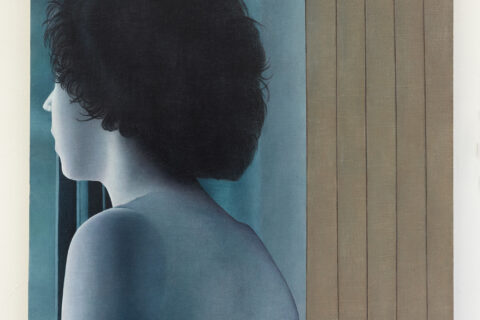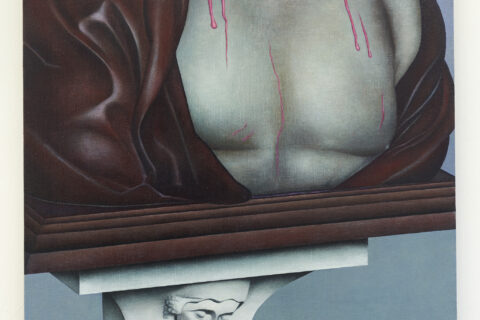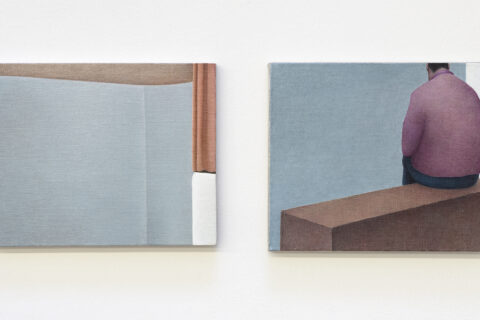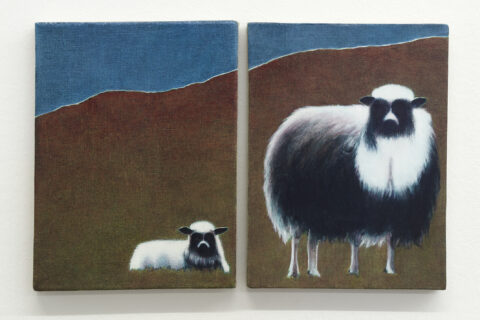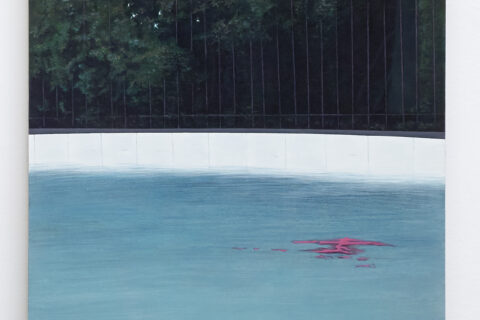Maria Polyzoidou Incident
22/02/2016 – 09/04/2016
Eröffnung: Samstag, 20. Februar 2016, 16-18 Uhr
Opening: Saturday, February 20th, 2016, 4-6 pm
Öffnungszeiten: Mo–Fr 9–18.30 Uhr, Sa 10–14 Uhr
Opening hours: Mo–Fry 9am–6.30pm, Sat 10am–2pm
Reisebürogalerie
Diko Reisen
Komödienstraße 48
50667 Köln
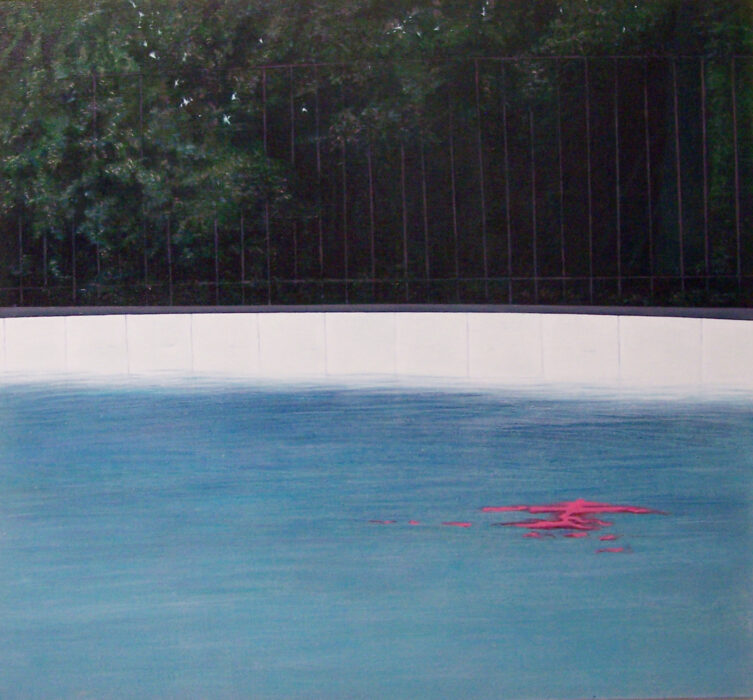
“Incident”, 2016
Ausstellungsansicht
Reisebürogalerie, Köln
Photo: Simon Vogel
“Incident”, 2016
Ausstellungsansicht
Reisebürogalerie, Köln
Photo: Simon Vogel
“Incident”, 2016
Ausstellungsansicht
Reisebürogalerie, Köln
Photo: Simon Vogel
“Incident”, 2016
Ausstellungsansicht
Reisebürogalerie, Köln
Photo: Simon Vogel
ohne Titel, 2014
Öl auf Leinen
44,5 x 34 cm
ohne Titel, 2015
Öl auf Leinen
30 x 40 cm
ohne Titel, 2015
Öl auf Leinen
35 x 40 cm
ohne Titel, 2015
Öl auf Leinen
35 x 45 cm
ohne Titel, 2015
Öl auf Leinen
35 x 45 cm
ohne Titel, 2015
Öl auf Leinen
40 x 40 cm
ohne Titel, 2015
Öl auf Leinen
45 x 45 cm
ohne Titel, 2015
Öl auf Leinen
40 x 30 cm
ohne Titel, 2015
Öl auf Leinen
62 x 67 cm
ohne Titel, 2016
Öl auf Leinen
60 x 70 cm
links:
ohne Titel, 2014
Öl auf Leinen
30 x 24 cm
rechts:
ohne Titel, 2015
Öl auf Leinen
30 x 25 cm
ohne Titel, 2015
Öl auf Leinen
zweiteilig
je 24 x 18 cm
ohne Titel, 2015
Öl auf Leinen
85 x 90 cm
Press Release
Incident [Vorfall, Störung] ist die erste Ausstellung von Maria Polyzoidou in Deutschland. Ihre Malerei schreibt sich in die Tradition des Realismus ein. Doch verschiebt sie die gegenständliche Bindung, indem sie Formen digitaler Bildproduktion aufnimmt und umgekehrt der Datenoberfläche eine undurchdringliche Wiedergabe entgegenhält. Die technologische Dimension schlägt sich in farbiger Sättigung der Leinwand ohne jede expressive Geste nieder, digitale Farbmanipulation wird mit subtilem Kolorismus beantwortet, und die Verbindung von heterogenen Bildelementen zu einer unverrückbaren Einheit transformiert die grenzenlose Verfügbarkeit von Bildern. Polyzoidou greift sowohl auf ihr Archiv persönlicher Bilder als auch auf das Inventar von Bildern zurück, die im Netz kursieren. Intime Bilder werden von der Person getrennt und beanspruchen öffentliche Sichtbarkeit, während anonym produzierten und allgemein zugänglichen Bildern eine einzigartige Bedeutung zugestanden wird. Polyzoidous Malerei bezieht sich auf die Sphären des Privaten und des Öffentlichen, die Sphären von Virtualität und Körperlichkeit – jedes Bild ist die momenthafte Konkretisierung eines unstabilen und destabilisierenden Schnittpunktes der verschiedenen Bereiche.
Die Bilder funktionieren als Fragmente, manche erscheinen als knapp beschnittene Details einer ausgreifenden Konstellation. Dabei sind die Gegenstände so platziert, dass sich keine weitere Veränderung denken lässt. Sie sind durch Unbewegtheit, lastende Stille, Verschlossenheit (auch wenn ein bühnenartiger Raum dargestellt ist) und Distanz (so nah eine Sache auch sein mag) bestimmt. Ihr Zusammenhalt entsteht durch malerisch erzeugten Druck, und dieser wird durch theatralische Versatzstücke eines barocken Pathos noch verstärkt. Die Dinge finden sich nicht von selbst zusammen, sondern ihre Verbindung wird ihnen von außen und nachträglich auferlegt. So irreversibel diese aber erscheint, bleibt sie doch prekär. Die plastisch gemalte Hand eines Kindes ruht auf einer als Rücken zu lesenden, vollkommen flachen Farbfläche ohne jede Modulierung; die Projektion eines schwarz/weißen Bildes auf der Wand stößt mit einem aufgebauschten, intensiv roten Bettüberwurf zusammen; im Dunkeln schwach schimmernde Lichter eines Weihnachtsbaums lassen sich mit der hell erleuchteten Rücklehne eines Sofas nicht in Übereinstimmung bringen. Die voneinander unterschiedenen Dinge sind Anlass für die Einführung von Konturen, Schnitten und scharfen Rändern, die jedes Bild zerschneiden.
Malerische Gewalt erzwingt momenthaft zusammenhängende Bilder einer Realität, die sich bereits in frei flottierende Partikel aufgelöst hat. Zusammengenommen exponieren die Bilder von Incident eine apokalyptische Vision. Das Licht, das Körper modelliert und Räume erleuchtet, ist das Licht eines weit entfernten, schon längst erloschenen Gestirns.
- Ulrich Loock
Maria Polyzoidou, Jahrgang 1973, wuchs in Brüssel auf, bevor sie 1997 nach Athen zog, um an der dortigen Hochschule für Kunst zu studieren. Neben Einzelausstellungen in der AD Gallery, Athen in 2013 und 2011, wurden ihre Arbeiten in mehreren Gruppenausstellungen gezeigt, unter anderem in der Michael Cacoyannis Foundation, Athen, dem Museum Alex Mylona, Athen sowie der 2. Thessaloniki Biennale 2009. Heute lebt und arbeitet die Künstlerin in Berlin.
---------------------------------------------------------------------------
Incident is the first exhibition of the work of Maria Polyzoidou in Germany. Her paintings inscribe themselves in the tradition of realism. She shifts the adherence to the representational, however, by adopting forms of digital image production; conversely, she counters those forms with an impenetrable rendering. The technical dimension is mirrored in the chromatic saturation of the canvas without the slightest expressive gesture; a subtle colourism responds to the digital manipulation of colour, and the combination of heterogeneous pictorial elements to form an unalterable unity transforms the boundless availability of images. Polyzoidou draws from her archive of personal images as well as from the vast stock of images circulating on the web. Whereas intimate pictures are dissociated from the person and claim public visibility, anonymously produced and generally accessible images are conceded unique meaning. Polyzoidou’s painting makes reference to the spheres of the private and the public, the virtual and the corporal – every painting is a momentary concretization of an unstable and destabilizing interface between the various realms.
The paintings function as fragments. Many look like tightly cropped details of a far more expansive constellation. The objects are positioned in such a way that no further change is conceivable. They are distinguished by immobility, oppressive silence, impermeability (even if a stage-like space is depicted) and distance (however close a thing might be). Their cohesion is brought about by pressure generated with the means of painting and further heightened by theatrical set pieces of Baroque pathos. They do not come together of their own accord; their affiliation, rather, is imposed upon them from the outside and after the fact. Yet however irreversible this affiliation might appear, it nevertheless remains precarious. The three-dimensionally painted hand of a child rests on a completely flat patch of colour to be read as a human back; the projection of a black-and-white picture on the wall collides with a vividly red billowing bedspread; the lights of a Christmas tree, glowing feebly in the dark, defy reconciliation with the brightly illuminated back of a sofa. Mutually distinguished from one another, the objects provide occasion for the introduction of contours, cuts and sharp edges that slice through every scene.
Painterly violence enforces momentarily cohesive images of a reality that has already dissolved into freely floating particles. Taken together, the paintings in Incident expose an apocalyptic vision. The light that models the bodies and illuminates the spaces is the light of a far-distant, already long-extinguished star.
- Ulrich Loock
Maria Polyzoidou, born in 1973, grew up in Brussels before moving to Athens in 1997 where she studied at the Academy of Fine Arts. Apart from solo exhibitions at AD Gallery, Athens in 2013 and 2011, her works were included in numerous group exhibitions, for example at the Michael Cacoyannis Foundation, Athens, Museum Alex Mylona, Athens as well as at the 2. Thessaloniki Biennial 2009. The artist currently lives and works in Berlin.
